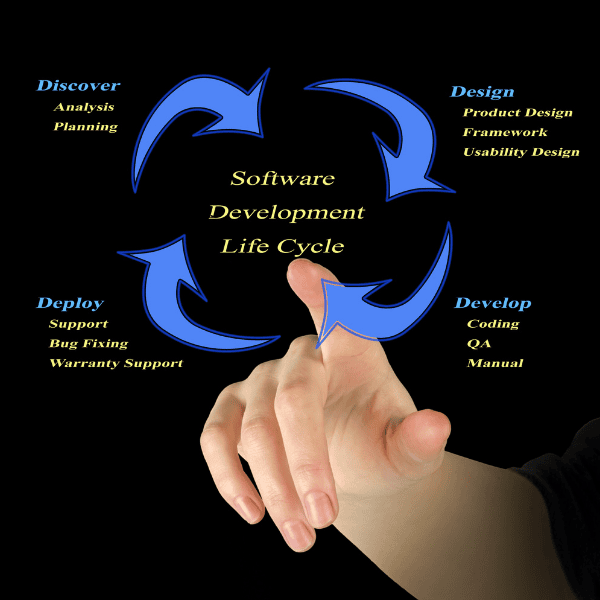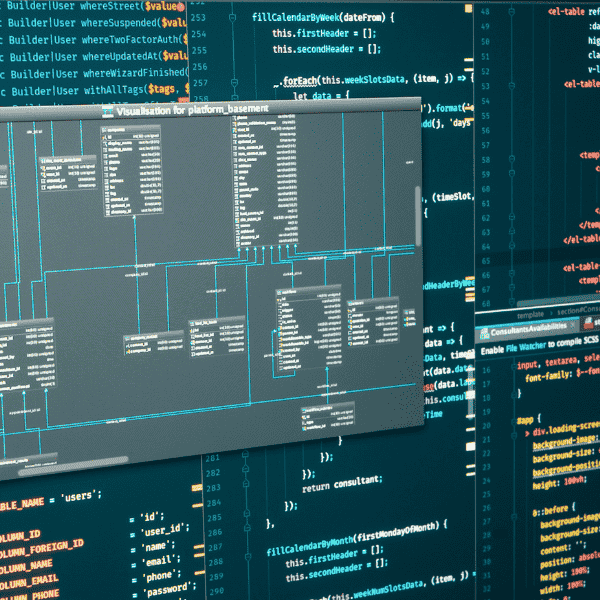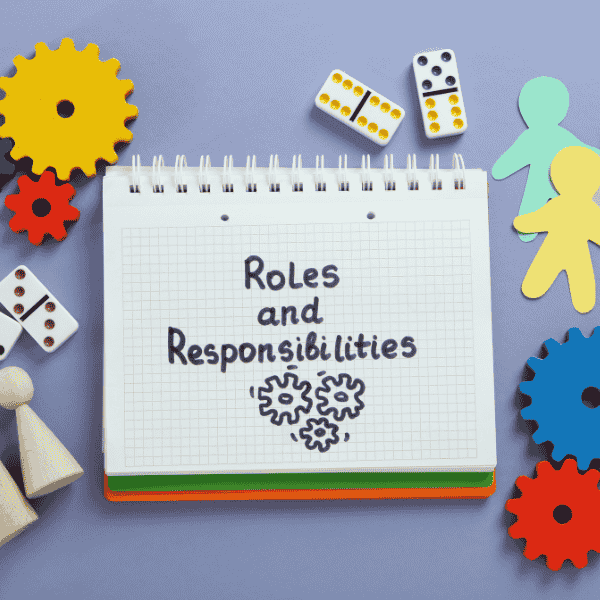Introduction
Are you ready to turn your brilliant idea into a reality? Embarking on the software development journey can be both exciting and overwhelming. With so many stages and considerations involved, it’s crucial to have a roadmap to guide you from idea to launch.
In this article, we’ll explore the intricacies of the software development life cycle (SDLC) and provide you with invaluable insights on how to navigate each step successfully.
From requirement gathering and analysis to testing and deployment, we’ll unravel the secrets behind creating high-quality software that meets the needs of your users. Whether you’re a seasoned entrepreneur or a first-time developer, this comprehensive guide will equip you with the knowledge and strategies you need to bring your software to life.
So, fasten your seatbelt and get ready to embark on a transformative journey as we delve into the world of software development.
The Importance of Understanding the SDLC
The software development life cycle (SDLC) is a systematic process that outlines the various stages involved in creating software, from its inception to its deployment and maintenance. Understanding the SDLC is crucial because it helps ensure that your software is developed in a structured and efficient manner. By following a well-defined SDLC, you can minimize risks, control costs, and deliver a high-quality product that meets the needs of your users.
The SDLC provides a framework for organizing and managing the entire software development process. It helps you break down the complex task of developing software into manageable phases, making it easier to plan, execute, and control the project. By having a clear understanding of the different stages of the SDLC, you can set realistic expectations, allocate resources effectively, and mitigate potential risks.
In addition, understanding the SDLC allows you to establish clear communication and collaboration channels with your team and stakeholders. It enables everyone involved in the project to have a shared understanding of the development process, facilitating smoother coordination and decision-making.
By aligning your team’s efforts with the SDLC, you can ensure that everyone is working towards a common goal and that each stage of the development process is executed with precision.
The Different Phases of the SDLC
The software development life cycle consists of several distinct phases, each with its own set of activities, deliverables, and objectives. While the specific names and number of phases may vary depending on the methodology or framework used, the core stages remain consistent. Let’s explore each phase in detail:
1. Requirements Gathering and Analysis
The first phase of the SDLC is the requirements gathering and analysis stage. This is where you identify and document the needs and expectations of your users, as well as define the scope and objectives of the software project. During this phase, you’ll conduct interviews, surveys, and workshops to gather information, analyze existing systems and processes, and prioritize requirements.
Requirements gathering involves understanding the functional and non-functional requirements of the software. Functional requirements define what the software should do, while non-functional requirements specify how the software should perform. It’s important to involve all stakeholders, including end-users, clients, and developers, to ensure that the requirements are comprehensive and accurate.
Once the requirements are gathered, they need to be documented in a clear and concise manner. This documentation serves as a reference throughout the development process and helps keep everyone aligned with the project goals. The requirements document should include detailed descriptions of the software’s features, user stories, use cases, and any constraints or dependencies that need to be considered.
2. Designing the Software Solution
After gathering and analyzing the requirements, the next phase of the SDLC is designing the software solution. This is where you translate the requirements into a detailed blueprint or design document that outlines how the software will be structured and how its various components will interact with each other.
The design phase involves creating both the high-level architecture and the detailed design of the software. The high-level architecture defines the overall structure of the software, including the different modules or components, their relationships, and the interfaces between them. The detailed design, on the other hand, focuses on the internal workings of each component, including algorithms, data structures, and database schemas.
During the design phase, it’s important to consider factors such as scalability, maintainability, and security. The design should be flexible enough to accommodate future changes and enhancements, and it should adhere to industry best practices and standards. By investing time and effort in designing a robust and well-thought-out solution, you can save a lot of time and resources during the development and testing phases.
3. Development and Coding
Once the design is finalized, the development and coding phase begins. This is where the actual coding and implementation of the software take place. The development phase involves writing the code, integrating different components, and building the software according to the design specifications.
During development, it’s important to follow coding best practices and standards. This includes using appropriate naming conventions, writing modular and reusable code, and documenting the code for future reference. By adhering to coding standards, you can ensure that the code is maintainable, readable, and easy to understand by other developers.
In addition to coding, the development phase also involves setting up the development environment, configuring databases and servers, and integrating third-party libraries or APIs. It’s important to establish a version control system to track changes and collaborate effectively with your team. Regular code reviews and continuous integration can help identify and fix any issues or bugs early on, ensuring a smoother development process.
4. Testing and Quality Assurance
Testing and quality assurance are critical phases in the SDLC that ensure the software meets the required standards of functionality, reliability, and performance. Testing helps identify any defects or errors in the software and ensures that it behaves as expected in different scenarios.
The testing phase involves creating test cases, executing tests, and reporting and fixing any issues or bugs that are discovered. There are different types of testing that can be performed during this phase, including unit testing, integration testing, system testing, and user acceptance testing (UAT). Each type of testing serves a specific purpose and helps uncover different types of defects.
Unit testing focuses on testing individual components or units of code to ensure they function correctly. Integration testing verifies that different components work together seamlessly. System testing tests the entire system as a whole to ensure it meets the specified requirements. UAT involves testing the software with end-users to ensure it meets their expectations and is easy to use.
In addition to testing, quality assurance involves implementing quality control measures and ensuring that the software development process follows established standards and guidelines. This includes conducting code reviews, performing static code analysis, and adhering to coding and documentation standards. By prioritizing quality throughout the development process, you can deliver a reliable and user-friendly software product.
5. Deployment and Implementation
Once the software has been developed and thoroughly tested, it’s time to deploy and implement it. The deployment phase involves preparing the software for production use and making it available to end-users. This includes configuring servers, databases, and other infrastructure components, as well as installing the software on the target environment.
Before deploying the software, it’s important to conduct a final round of testing to ensure that everything is working as expected in the production environment. This includes verifying that the software is compatible with the target operating system, database, and other dependencies. It’s also a good idea to create backups and implement disaster recovery plans to mitigate any potential risks or downtime.
During the deployment phase, it’s crucial to communicate with stakeholders and end-users to manage their expectations and provide support and training if necessary. This includes creating user manuals, conducting training sessions, and addressing any concerns or issues that may arise during the implementation process. By ensuring a smooth and well-executed deployment, you can minimize disruptions and maximize user satisfaction.
6. Maintenance and Support
The software development life cycle doesn’t end with deployment. Once the software is in production, it requires ongoing maintenance and support to ensure its continued functionality and performance. The maintenance phase involves fixing any bugs or issues that are discovered, as well as making enhancements or improvements based on user feedback.
Maintenance can be categorized into corrective maintenance, which involves fixing defects or errors, and adaptive maintenance, which involves making changes to the software to accommodate changes in the environment or requirements. It’s important to establish a process for tracking and prioritizing maintenance requests, as well as allocating resources and budget for ongoing support and maintenance activities.
In addition to maintenance, ongoing support is crucial to address user inquiries, provide assistance, and ensure user satisfaction. This includes setting up a help desk or support system, monitoring the software for performance issues, and continuously improving the software based on user feedback. By actively engaging with your users and addressing their needs, you can build trust and loyalty, and ensure the long-term success of your software.
Best Practices for Navigating the SDLC
Navigating the software development life cycle successfully requires a combination of technical expertise, effective project management, and collaboration skills. Here are some best practices to help you navigate the SDLC and deliver a high-quality software product:
1. Establish clear goals and requirements: Clearly define the objectives and requirements of your software project from the outset. This will help ensure that everyone involved has a shared understanding of the project goals and deliverables.
2. Follow an iterative and incremental approach: Instead of trying to develop the entire software at once, consider using an iterative and incremental approach. This allows for flexibility, feedback, and continuous improvements throughout the development process.
3. Communicate and collaborate effectively: Establish open and transparent communication channels with your team and stakeholders. Regularly update them on the progress of the project, seek feedback, and address any concerns or issues promptly.
4. Manage scope and prioritize features: Scope creep can derail even the most well-planned projects. Clearly define the scope of the software and prioritize features based on their importance and value to the end-users.
5. Invest in quality assurance: Quality assurance should be an integral part of your development process. Implement thorough testing and quality control measures to ensure that the software meets the required standards of functionality, reliability, and performance.
6. Adopt automation and tools: Leverage automation and tools to streamline and optimize your development process. This includes using version control systems, continuous integration tools, and automated testing frameworks.
7. Seek user feedback and iterate: Involve end-users throughout the development process and actively seek their feedback. This will help you understand their needs and expectations, and make necessary adjustments or improvements to the software.
8. Document and maintain knowledge: Document all aspects of your software development process, including requirements, design, code, and test plans. This will facilitate knowledge transfer, future enhancements, and maintenance activities.
Tools and Resources for Managing the SDLC
Managing the software development life cycle effectively requires the right tools and resources. Here are some popular tools and resources that can help you streamline and optimize your SDLC:
– Project management tools: Tools like Jira, Trello, and Asana can help you plan, track, and manage your software development projects effectively. These tools provide features for task management, collaboration, and progress tracking.
– Version control systems: Git, Mercurial, and Subversion are widely used version control systems that allow you to track changes in your codebase, collaborate with your team, and roll back to previous versions if needed.
– Integrated development environments (IDEs): IDEs like Visual Studio, Eclipse, and IntelliJ provide a comprehensive development environment with features like code editors, debugging tools, and integrated build systems.
– Automated testing frameworks: Frameworks like Selenium, JUnit, and PHPUnit can help automate the testing process, allowing you to run tests automatically and identify any issues or bugs early on.
– Software development methodologies: Agile and DevOps are popular methodologies that provide frameworks for managing the software development life cycle. These methodologies emphasize collaboration, continuous delivery, and iterative development.
– Online resources and communities: Websites like Stack Overflow, GitHub, and Reddit provide a wealth of knowledge and resources for developers. These platforms allow you to ask questions, share code, and learn from the experiences of other developers.
Conclusion: Successfully Navigating the Software Development Life Cycle
Navigating the software development life cycle can be a complex and challenging task. However, by understanding the importance of the SDLC and following best practices, you can increase your chances of delivering a high-quality software product that meets the needs of your users. Remember to establish clear goals and requirements, communicate and collaborate effectively, and invest in quality assurance. By leveraging the right tools and resources and seeking user feedback, you can navigate each phase of the SDLC with confidence and bring your software to life. So, fasten your seatbelt and get ready to embark on a transformative journey as you turn your idea into a reality.
Congratulations! You’ve reached the end of this comprehensive guide on navigating the software development life cycle. We hope you found this article informative and valuable in your software development journey. If you have any questions or need further assistance, feel free to reach out to us. Good luck with your software development endeavors!
FAQs
What is the Software Development Life Cycle (SDLC) and its stages?
The Software Development Life Cycle (SDLC) is a systematic approach used to develop software applications. It consists of several stages, including Requirements Gathering, Planning, Design, Implementation, Testing, Deployment, and Maintenance. Each stage plays a crucial role in ensuring a successful software development process from idea to launch.
How do I gather and define requirements for my software project?
Requirements gathering involves communicating with stakeholders, end-users, and subject matter experts to understand their needs and expectations. It’s essential to document these requirements clearly, prioritize them, and validate them with stakeholders to ensure that the software meets the intended objectives.
What are the common development methodologies used in SDLC, like Agile or Waterfall?
The two popular development methodologies are Agile and Waterfall. Agile emphasizes flexibility and iterative development, allowing for frequent feedback and adjustments. Waterfall follows a linear approach, where each stage is completed before moving to the next one. Choosing the right methodology depends on the project’s complexity, size, and client requirements.
How can I effectively manage risks during the software development process?
To manage risks effectively, conduct a comprehensive risk assessment at the beginning of the project. Identify potential risks and their impact on the project. Create a risk management plan to address and mitigate these risks. Regularly review and update the plan throughout the SDLC to ensure proactive risk management.
What is the significance of testing and quality assurance in the SDLC?
Testing and quality assurance are critical components of the SDLC to ensure that the software meets the desired quality and functionality. Through various testing methods like unit testing, integration testing, and user acceptance testing, developers can identify and rectify defects, resulting in a reliable and stable software product development.
How do I handle software deployment and implementation smoothly?
A successful software deployment requires careful planning and coordination. Create a deployment plan that outlines the steps, responsibilities, and contingency measures. Conduct thorough testing before deployment to minimize potential issues. Communicate with stakeholders and end-users to ensure a smooth transition and provide post-launch support.
What role does project management play in navigating the SDLC successfully?
Project management is crucial in orchestrating the software development process efficiently. It involves defining clear project goals, setting timelines, allocating resources, and managing communication among team members. Effective project management ensures timely delivery and adherence to project requirements.
What are the key challenges in software development and how to overcome them?
Common challenges in software development include scope creep, unclear requirements, budget constraints, and technical complexities. Overcoming these challenges involves thorough planning, regular communication with stakeholders, employing agile methodologies, and fostering a collaborative work environment.
How can I ensure effective communication and collaboration among development teams?
Encourage open and transparent communication channels among team members and stakeholders. Regular team meetings, status updates, and using collaborative project management tools can foster effective communication. Clearly defined roles and responsibilities also contribute to better collaboration.
What are the best practices for documentation and maintenance in the SDLC?
Documenting each stage of the SDLC is crucial for maintaining clarity and facilitating future updates or changes. Properly maintaining the documentation ensures that future team members can understand and build upon the existing work. Regular maintenance, updates, and version control are essential for the long-term success of the software product.






